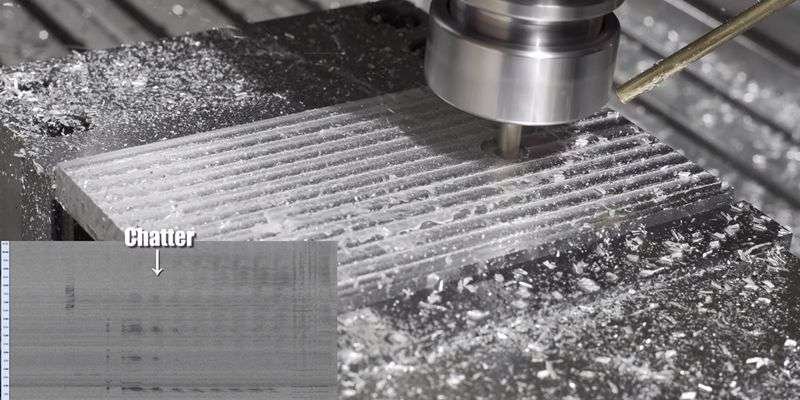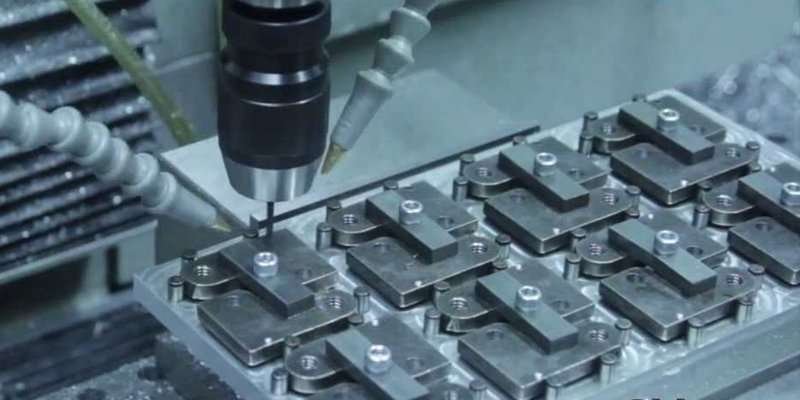Choosing the right CNC machine tools is crucial for successful CNC machining operations. These CNC machining tools are of different types, ranging from milling to turning, grinding, and turning tools. Each of these CNC machine tools has its respective properties and uses. However, it is essential to understand the right CNC machine tools for your project to achieve a better result.
This article gives a detailed discussion of the types of CNC machining tools, special tools for specific uses, and materials used to make CNC machine tools. You’ll also learn the typical coating used on cutting tools.
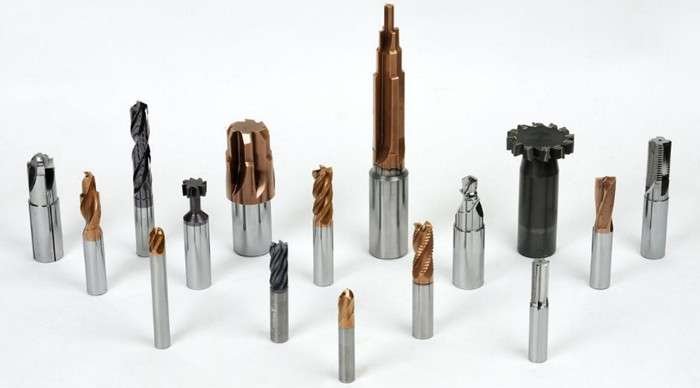
Table of Contents
ToggleTypes of CNC Machining Tools
CNC machining tools used in machining operations have different categories, each with distinctive features and functions. CNC cutting tools are divided into the following main categories.
1. CNC Cutting (Milling) Tools
CNC milling tools are undoubtedly a widely used CNC machining tool in the CNC industry. Even though these tools are also called cutting tools, there is a milling procedure instead of cutting in CNC. As such, CNC cutting tools are commonly called CNC cutters or CNC milling cutters.
Milling is a popular procedure that involves the use of machining tools. The large variety of CNC tools commonly used in milling allows it to achieve high accuracy, as in the turning procedure. CNC milling tools are often used with a CNC milling machine. These milling machines use rotary CNC cutters to remove material from a fixed workpiece.
Here are the common types of CNC milling tools:

End Mills
End mills are popular tools in CNC milling procedures. They are versatile and quite similar to drill bits. Hence, they can make holes in materials without pre-drilled spots. Machinists use different types of end mills with varying numbers of flutes and nose types.
There are three types of end mills, which are classified by their nose: ball, nose, bullnose, and flat end mills. Meanwhile, 8 is the minimum number of flutes any end mill could have.
Face Mills
Face mills are CNC tools with flat faces and replaceable cutting edges made with carbide material. A face mill can only cut a workpiece horizontally since its cutting edges are on the side. Hence, face mills flatten the surface of workpieces.
Slab Mills
Slab mills or plain milling cutters are CNC machining tools utilized in milling flat surfaces. These CNC cutters have no side teeth and are often compatible with heavy-duty operations in general. However, the surface of the workpiece must maintain a parallel position to the CNC mill table.
Fly Cutter
These CNC cutters comprise a solid tool body and one or two cutting bits. The fly cutter’s CNC bits make broad, shallow cuts. As such, it provides a smooth surface finish on workpieces. Fly cutters with one tool bit are the widely used type. On the other hand, fly cutters with two tool bits are sometimes regarded as fly bars, providing a larger swing.
Hollow Mills
Hollow mills have the shape of a pipe and look like inverted end mills. Machinists use this CNC cutting tool to create radii and full points in parts due to the cutting edges present on the mill’s inner part.
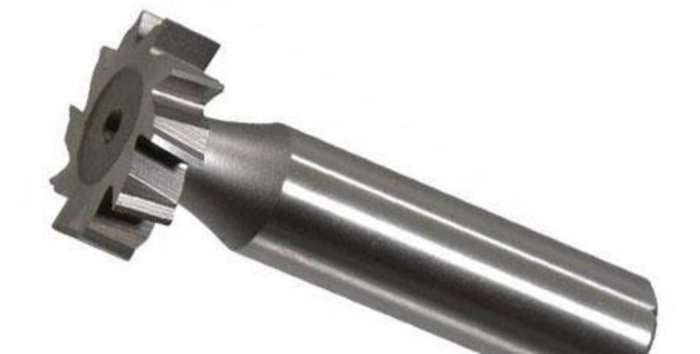
Woodruff Cutters
Woodruff or keyseat cutters are CNC milling tools machinists use to cut key slots into parts like shafts. The teeth of these CNC cutters are perpendicular to the outside diameter. Hence, they are suitable for making slots or grooves for Woodruff keys.
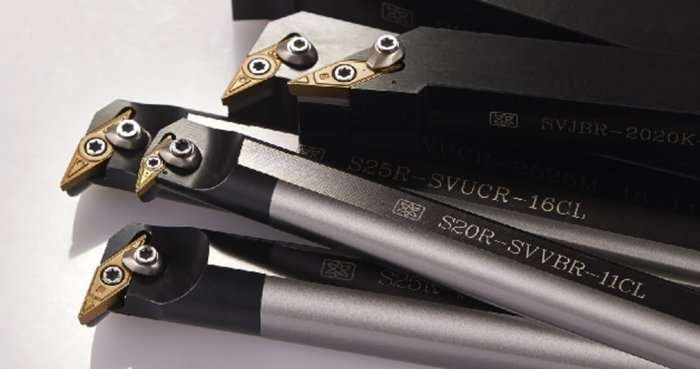
2. CNC Turning Tools
Turning is one of the earliest machining operations dating back to the Egyptian empire. CNC turning tools function with a lathe/turning machine. It rotates the workpiece at high RPM while the CNC lathe tools remove excess material from the workpiece in a controlled manner to achieve the programmed shape.
However, the chosen turning procedure and tool determine the workpiece’s shape. Here are typical turning tools used in CNC machining:
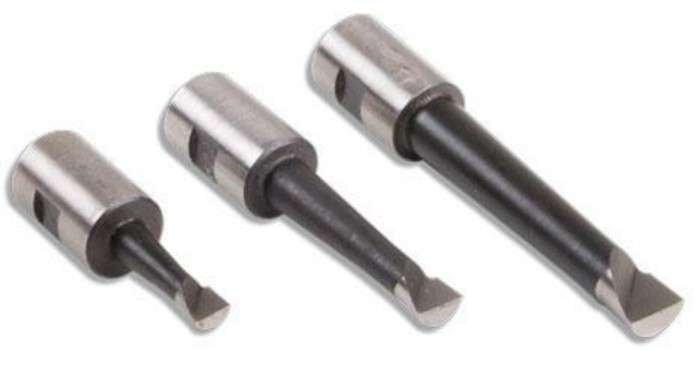
Boring Tools
Boring tools work with the CNC lathe to widen tapered or straight holes pre-drilled or cast into parts.
Chamfering Tools
Machinists commonly use chamfering tools in different applications like beveling, deburring, and removing sharp edges on machined parts.
Knurling Tools
These are functional machinist cutting tools with two or more metal rollers. Machinists use them to create different patterns (straight, diagonal, or diamond) on the surface of a workpiece. These knurled patterns facilitate a better grip on finished parts.
Parting Tools
A parting tool is another type of CNC turning tool with a blade-like edge. Machinists use this narrow CNC tool to cut minimum metal away from finished parts.
3. CNC Drilling Tools
Drilling tools, also known as drill bits, are CNC tools suitable for creating holes in various workpieces. These machining tools work with CNC mills or twist drills, making holes with their flutes and tapered cutting points. Below are the standard drilling tools.

Center Drills
Center drills are CNC drilling tools for making precise holes in a workpiece before employing other drill bits to enlarge the hole.
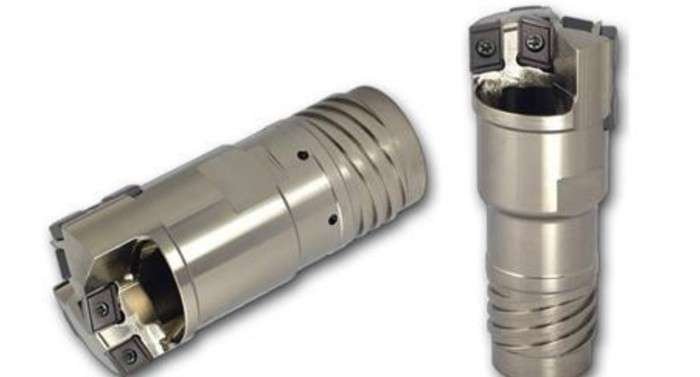
Ejector Drills
Machinists employ ejector drills to create wider and deeper holes in the workpiece after using center drills.
Twist Drills
Twist drills or twist bits are cylindrical drilling tools with deep helical grooves, usually made of high-speed steel (HSS). They are suitable for general purposes, especially for making holes in materials like metal.
4. CNC Grinding Tools
CNC grinding tools function with grinding wheels. Machinists use these CNC machining tools to smoothen the surface of workpieces because of their high level of accuracy. The abrasive grinding wheel is a standard CNC grinding tool.
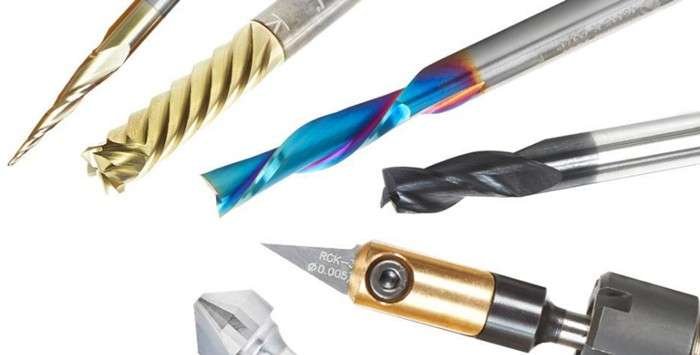
Special CNC Cutting Tools for Certain Uses
There are special CNC cutting tools for specific purposes aside from the standard CNC tools discussed earlier. Here are some of the less common CNC machining tools for specific uses.
Reamer
Reamers are CNC tools machinists commonly use to increase the diameter of existing holes in a workpiece. These tools give the holes a more precise finish and accurate diameter that matches the required tolerances.
Engraving Tool
Engraving tools are specialized CNC tools used to add texts, designs, or detailed patterns on the surface of the workpieces. These tools add decorative and functional features to workpieces and are applicable across different industries for product identification and branding.
Countersink Tool
A countersink tool is a CNC machining tool used by machinists to make conical recess to a drilled hole such that it can accommodate the tapered head of a bolt or screw.
Dovetail Tool
Machinists use dovetail tools to make special types of undercut into workpieces. These tools have specific geometry that makes them suitable for making dovetail joints used in metalworking or woodworking to connect or lock two pieces of material with a firm interlocking fit.
External Radius Cutter
External radius cutters are special CNC tools with semi-circular cutting edges that machinists use to add a radius to an outer edge, such as around the rim of a pocket. These radius milling cutters create smooth, consistent workpiece edges, eliminating sharp corners and stress concertation.
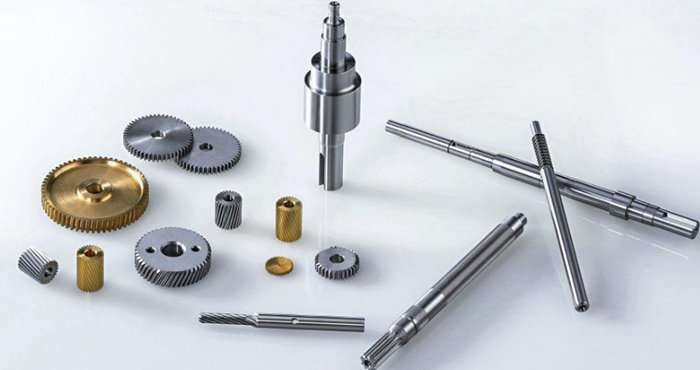
Materials Used in Making CNC Machine Cutting Tools
CNC machine cutting tool manufacturers often use various materials depending on the intended CNC machining process. Besides, making CNC machine cutting tools with materials harder than the workpiece is a general rule of thumb. Here are the typical materials used in producing CNC cutting tools.
Carbon Steel
Carbon steel is an economical material widely used in producing CNC milling cutters. Its alloying elements include 0.6 – 1.5% carbon, manganese, and silicon. Besides, this material is cheap because of its low durability.
Using cutting tools made with this steel type for high-speed cutting or heavy-duty operations leads to faster degeneration since the melting point for carbon steel is 200 °C. Therefore, it is best suited for machining less rigid metals (like brass, magnesium, and brass).
High-speed Steel
High-speed steel is a durable alternative to carbon steel. It exhibits a remarkably high melting point of 600°C thanks to its chromium, molybdenum, and tungsten contents. High-speed steel CNC tools can withstand higher operating temperatures. Moreover, they are perfect for operations that require higher milling speeds.
Carbide
Carbide machining tools are made with a perfect blend of tungsten and cobalt, making them well-suited for high-speed operations. Cutting tools made with carbide are usually very hard, making them resistant to wear, rust, and heat. Carbide tools last longer and are perfect for machining operations that involve faster cutting speeds.
Machining tools made with carbide are suitable for cutting cast iron, graphite, heat-resistant steel, glass, and stainless steel.
Cutting Ceramics
In terms of hardness, cutting ceramics is the strongest of these materials. Ceramic material comprises silicon nitride and aluminum oxide. Generally, machinists use tools made with cutting ceramics on tough, strong materials such as cast iron and superalloys. However, these materials crack and whip easily when used on harder materials.
Moreover, ceramic machining tools are suitable for cutting hard steels, cast iron, or superalloys because they resist corrosion and high heat operations.
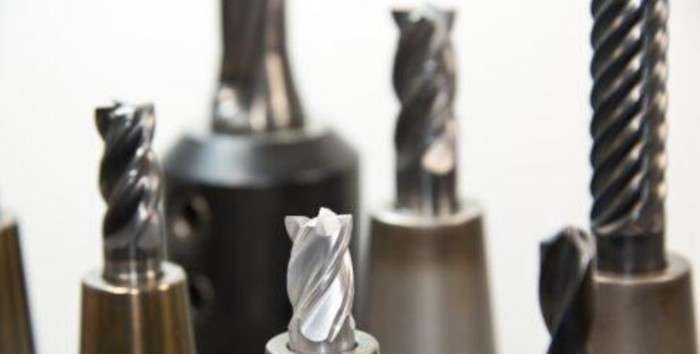
Common Coating Materials for CNC Machining Tools
The materials used in CNC tools contribute significantly to their properties. These coatings enhance the machining tool’s hardness and lifespan by ensuring they withstand higher working temperatures. Here are typical CNC machining tools’ coating materials.
Titanium Nitride (TiN)
Titanium nitride is one of the oldest coatings widely used to improve the hardness of CNC cutting tools. It also enhances other properties of the cutting tools, such as thermal stability and wear resistance. TiN-coated tools exhibit longer lifespans and improved surface finish with moderate resistance to oxidation.
Titanium Carbo-Nitride (TiCN)
This is a titanium nitride coating type commonly used on CNC cutting tools. Its carbon content distinguishes it from other variants of titanium nitride coatings. This coating exhibits a relatively low operating temperature, making it incompatible with high-temperature environments. However, it enhances the surface lubrication and hardness of the CNC machining tools.
Chromium Nitride (CrN)
CNC machining tools with chromium nitride coatings function well where titanium nitride coatings fail. Chromium nitride coating improves the cutting tool’s hardness, making it corrosion-resistant. Due to their increased thermal strength, CNC machining tools coated with chromium nitride are suitable for high-heat applications.
Diamond
Diamond is Earth’s hardest natural material, making it suitable for mechanical operations. As such, it can function well in harsh machining conditions. Machine tools coated with diamonds are ideal for cutting hard-to-machine metals like graphite and silicon-aluminum alloys.
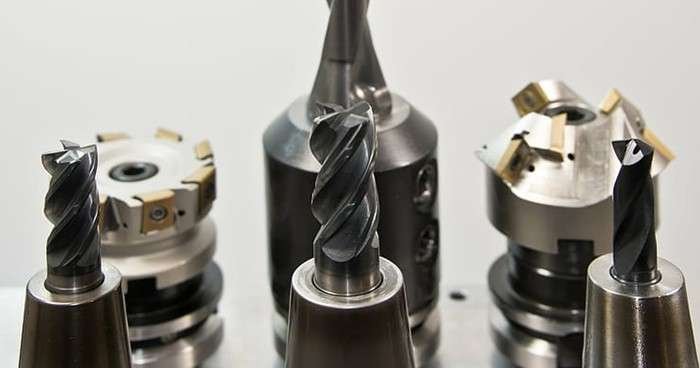
Consideration and Tips for CNC Cutting Tools Selection
There are specific variables to consider to successfully choose the right machine tools for optimized efficiency and surface finish in CNC machining.
Tool Material
The raw material used in making the CNC cutters is critical to selecting the right tool. For instance, high-speed steel tools are your go-to option if your project requires CNC cutting tools with long tool life and high heat resistance.
However, cutting ceramics is the best choice for machining harder materials such as cast iron. It would help to remember the rule of thumb stating that a cutting tool’s material must be harder than the workpiece’s.
Coating Used
The type of coating applied on the CNC machine tools plays a crucial role in their properties. For example, coating lathe cutting tools with titanium nitride increases their hardness and cost of production. Therefore, a titanium nitride cutter is not the right choice if you must minimize CNC machining costs.
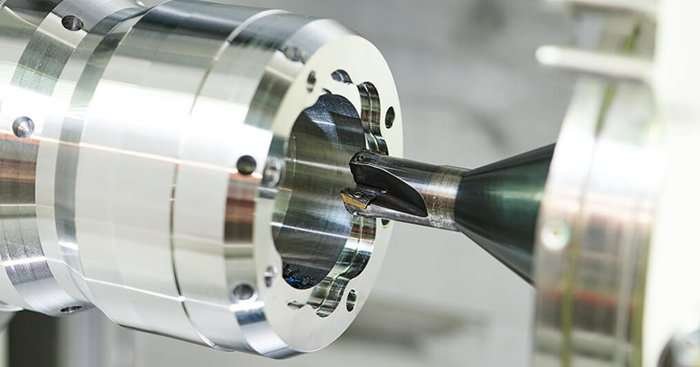
Machining Operation
There are several CNC machining operations, each requiring different CNC tools. As such, the intended machining operation determines the machine tools to work with. For example, twist, center, and spot drills are typical tools for drilling operations, and end, face, thread, shell, and slab mills are tools commonly used in milling operations. Nevertheless, cutting tools for a specific machining process can also work for other applications.
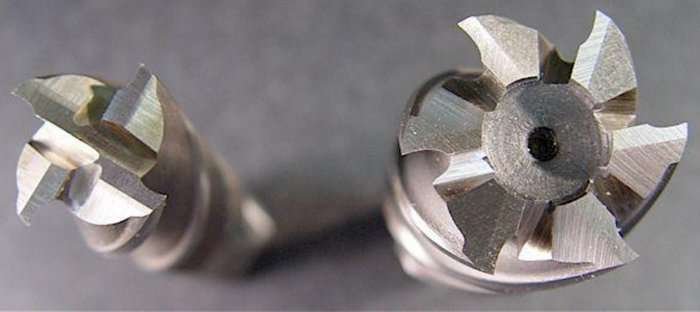
Number of Tool Flutes
The amount of flutes on CNC machine tools such as a milling cutter determines their feed rate. A machine tool can move at a higher velocity against the workpiece depending on its number of flutes. However, the cut-off workpiece bits can get stuck between the flutes in cases where a machine tool has too many flutes. Therefore, getting the optimum number of flutes for machining operations is important for excellent results.
Tool Diameter
The CNC machining tool’s diameter determines how quickly a tool cuts the workpiece because tools with larger diameter mill workpieces faster. However, the geometry of the final part may cause certain limitations.
For instance, if a workpiece requires specific inside radii, the tool cannot deviate from them. Likewise, CNC cutters with a large diameter are suitable for milling away bulk material. In contrast, the ones with a smaller diameter are suitable for finishing the inside corners of the workpiece.
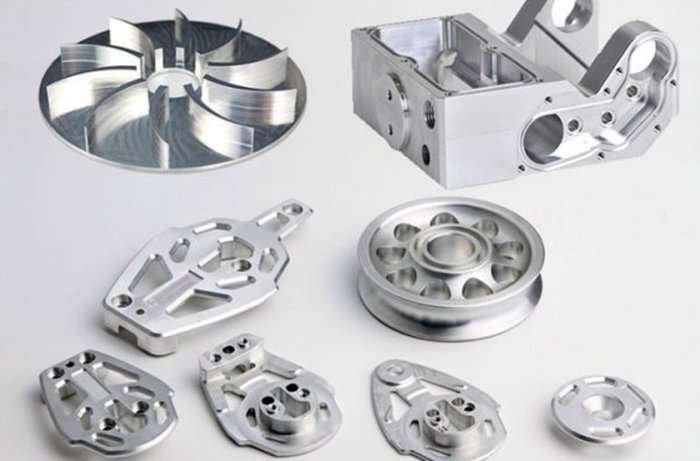
Industry Applications Parts for CNC Machining Tools
This section discusses the different application parts for CNC machining tools.
Automotive Industry
Automobile industry manufacturers rely on CNC machining tools to create different vehicle components. These include suspension parts, engine blocks, and transmission components.
Aerospace Industry
The aerospace sector uses CNC cutting tools to make precise aircraft components. Manufacturers rely on these CNC tools because they can handle the complex and high-precision demand of parts, including landing gear, turbine blades, and engine components.
Electronic Industry
Machinists employ different CNC machine tools to manufacture electronic components. These tools offer the precision and accuracy required to produce electrical parts like printed circuit boards (PCBs).
Medical Industry
Medical industry manufacturers use various CNC machining tools to create different medical parts and components. Dental components, surgical instruments, orthopedic implants, and components of electrical medical equipment are common medical parts produced with CNC machine tools.
Conclusion
CNC machine tools are integral to machining operations. Failure to choose the right CNC machining tool for your project attracts poor results. Hence, choosing the right tools is vital for successful precision machining. We have explored the CNC machine tools list and helpful tips for selecting the right CNC tools for your next project.
XinCheng is a dependable CNC machining services expert for you whenever you need professional assistance with your machine tool selection. Our skilled and experienced professionals can handle your project from CNC prototypes to precision parts. Don’t hesitate to reach out to us about your project today!
FAQs
Is it compulsory to coat CNC machine tools?
Although it is unnecessary to coat machining tools, you can use them without coating. However, coated machine tools last longer than those without coating.
What materials can CNC machining tools cut?
CNC cutters can cut various materials such as metals (aluminum, stainless steel, brass, copper, and titanium), plastic, ceramics, wood, and composites.
How do You choose a suitable CNC machining cutter?
When choosing the right machining cutter for a specific material, it is essential to consider factors including workpiece material type, feed rate, cutting speed, and preferred surface finish.

